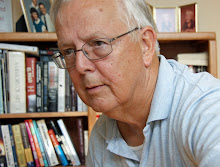 |
| George Polley |
Today
I’d like you to meet George Polley, an author living in Japan.
Welcome, George. How long have you been
writing?
I’ve
been writing since the mid-1960s, beginning with a novel about living in a
village in Central Illinois after moving there from the San Francisco bay area.
It was quite a change for me, rather like living on the opposite side of the
moon. Did I publish that novel? No; it wasn’t that good, but it did get me
going. My first published short story was “Jonah’s Birth,” which was published
in the Autumn 1971 edition of “The South Dakota Review.” I have also written
and published poetry since the early 1970s, and have a poetry collection
scheduled for publication sometime this year.
Tell us about the genesis of your three
novels.
The Old Man and the Monkey
(a fable) came from a dream I had about a big Japanese “snow” monkey in 2006.
Writing it was a matter of asking the monkey to tell me his story. Grandfather and the Raven (a novel
written in a story cycle) came from a big raven flying right over my head when
I was out walking in our neighborhood. When I got home, I sat down at my
computer and began to write. Twenty-one chapters later, it was finished. It
basically wrote itself. Bear, a story
about a boy named Andy and his unusual dog named Bear, came about because I wanted
to write a novel about a character in Grandfather
and the Raven. I lifted the character (Bear) out, transferred him to a
Seattle neighborhood where I grew up, and wrote his story. “Bear” is a big dog
that looks (and sometimes acts) like a bear. He and Andy are quite a pair.
You’re from the United States, and grew
up in Seattle. What drew you to Japan?
My
wife is from Hokkaido (Kushiro) and wanted to return home, so when I retired
from the mental health field at the end of 2007, we sold our house, flew to
Japan, found a condominium in Sapporo, bought it, and moved here at the end of
March 2008. It’s been quite a move, and I couldn’t be happier with it.
Talk about your character development.
How much of yourself do you put into your books?
Probably
a lot, though I don’t really think about it, which is probably common with
writers and other creative people. The characters in my three novels are about
caring people. They are people who show
affection, humor, treat people (and monkeys, ravens and dogs) with compassion.
I try to be this kind of person, and I like being around people like the
characters I write about. More about that later, when I mention what’s on my
“to be written” list.
What’s next on your “to be written” list?
I’ve
just finished the first draft of a novel about Mexico City in the early-mid
1970s, titled “The City Has Many Faces”. I lived in Mexico City for a time in
late 1973-early 1974, fell in love with it, and have been collecting stories,
mining memories, and taking notes for years. When I finished Bear, I pulled everything together, and
now have the book ready to revise, edit, and send to my publisher, Taylor
Street Publishing. Then comes “Seiji”, a novel about a Tokyo artist who as a
child survived the firebombings. That story is an expansion of a short story
that I wrote in 2009 that’s included in “A Rainbow Feast: New Asian Short
Stories”, edited by Mohammad A. Quayum. Once that is finished, I plan on
writing a psychological thriller about a female serial killer named Arla (also
the title of the novel). The story is
set in Seattle. Then, if Bear is
successful enough, I’ll turn it into a series.
How much research do you need to
do?
For
The Old Man and the Monkey, my research
was basically finding a place to locate the story. I chose a tiny (fictional)
village halfway between the cities of Fukugawa and Asahikawa in Hokkaido
Prefecture, even though I knew that monkeys aren’t native there. Why did I do
it in spite of that fact? Because the story is a fable about the power of
friendships. And because that’s where Yukitaro (the monkey) wanted to be. For Grandfather and the Raven I did no
research other than a lot of walking around our neighborhood. For Bear I updated my knowledge of the
neighborhood online. Same thing for my Mexico City novel. For “Seiji” I’ve done
extensive research on the location, the relevant history, the era and the
culture, covering a period from 1945 to 2003.
What (or who) are the major influences on
your writing?
This
question always makes me smile. After all these years, the major influences are
too many to mention. When I read, I keep
my eyes and mind open for new ways of doing things, new techniques that
interest me.
Are you active in any writer’s groups in
Sapporo?
I
meet once a month with a small group of expat writers, and have coffee with a
couple others. I belong to the Taylor Street Writers' Association, where there’s
a lot of support and ideas flowing on a daily basis. These activities keep me
focused and connected, which I find very important.
Thank you for your time, George.
George's books are available by visiting his Amazon author page.













1 comment:
Great interview, Bob! I found it very inspiring. Gotta go write now. :-)
Best,
Deb
Post a Comment